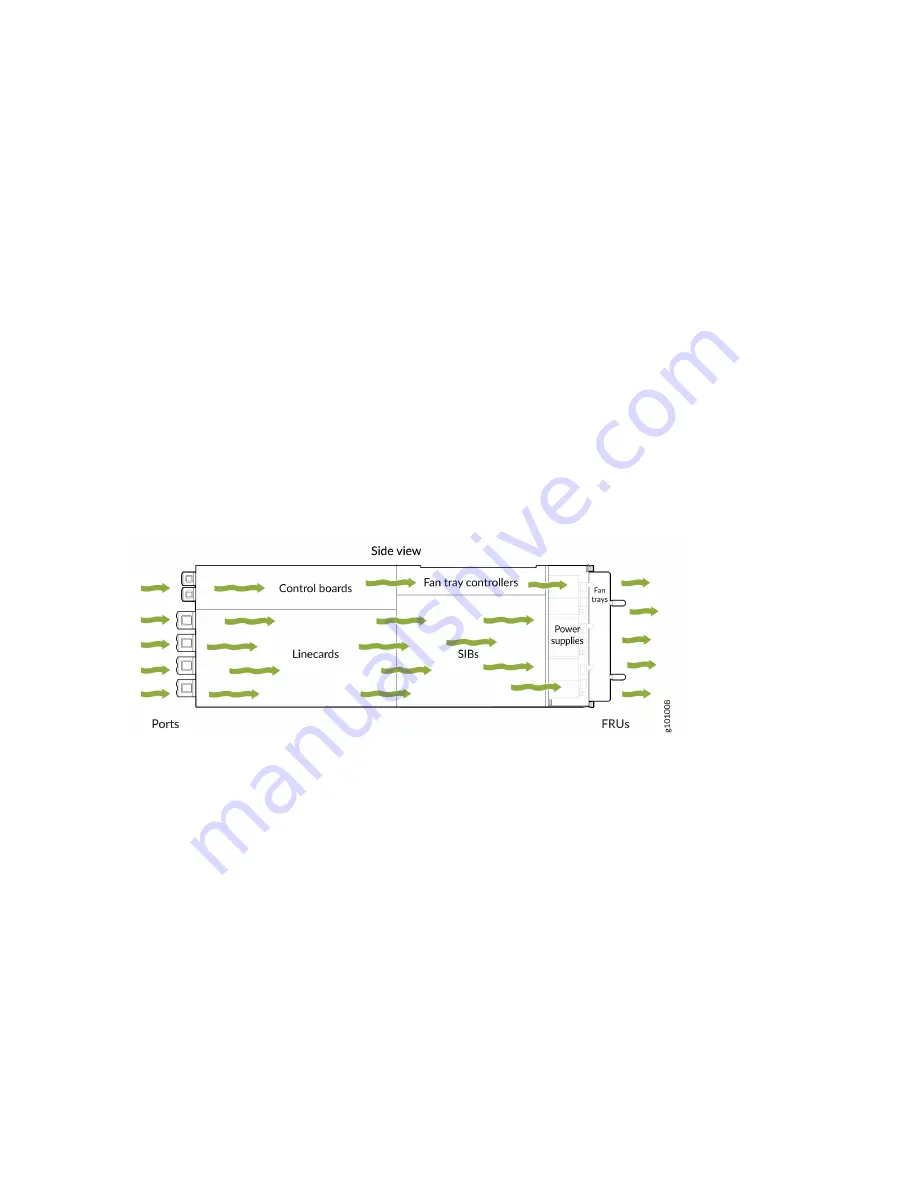
The system continually monitors the temperature of critical parts across the chassis and adjusts the
chassis fan speed according to the temperature. Junos OS controls the fan speed. Under normal
operating conditions, the fans in the fan tray run at less than full speed. If one fan tray controller fails or
appears missing , the other fan tray controller sets the fans to full speed. (A fan tray can appear to be
missing when you replace an SFB, for example.) The ability to modify fan speed enables the router to
continue to operate normally as long as the remaining fans cool the chassis sufficiently. Use the
show
chassis fan
command to see the status of individual fans and fan speed.
To determine the cooling of all the components in the system, use the
show chassis environment
command.
Airflow Direction in the MX10004
The air intake to cool the chassis is located on the port (line card) side of the chassis. Air flows into the
chassis from the ports in the Routing and Control Boards (RCBs) and line cards, through the Switch
Fabric Boards (SFBs), and exits from the fan trays and the power supplies. See
.
Figure 16: Airflow Through an MX10004
The fan tray continues to operate indefinitely and provide sufficient cooling even when a single rotor
fails, provided the room temperature is within the operating range. You can check the status of fans by
viewing the LEDs on each fan tray.
You cannot replace a single fan. If one or more fans fail, you must replace the entire fan tray.
In addition to the fans in the fan trays, an internal fan in each power supply also helps to cool
components such as line cards.
30















































